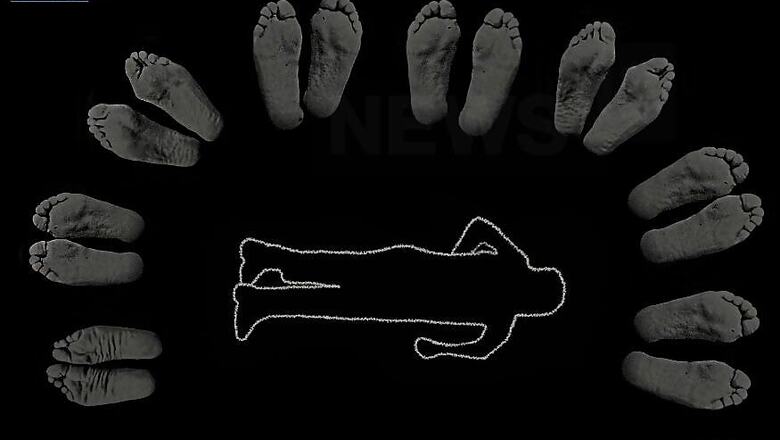
views
Kathua (Jammu and Kashmir): Neighbours said she was always dressed in floral frocks, that her big dark brown eyes and thick black hair made her the neighbourhood's favourite. “Such a beautiful girl,” one of them says.
Hers was a familiar face in Rasana, a small neighbourhood in Hira Nagar, Kathua, only accessible to the outside world through a bone-jarring journey on rutted, dirt roads. She sprinted through its narrow lanes along with her horses, leading them to the nearby forest covered in lush green vegetation. There she would spend most of her day, unknown to the evil that lurked in its tall wild grass.
Then she used to take the same neighbourhood lanes, pass through them and reach her home. Back then, the village almost used to remain empty; the menfolk out for work and the women inside their homes, busy with their daily chores.
Now, a caravan of news satellite trucks remains parked outside the village —the epicentre of the gang-rape and murder of the same girl who dressed in floral frocks. She was just eight.
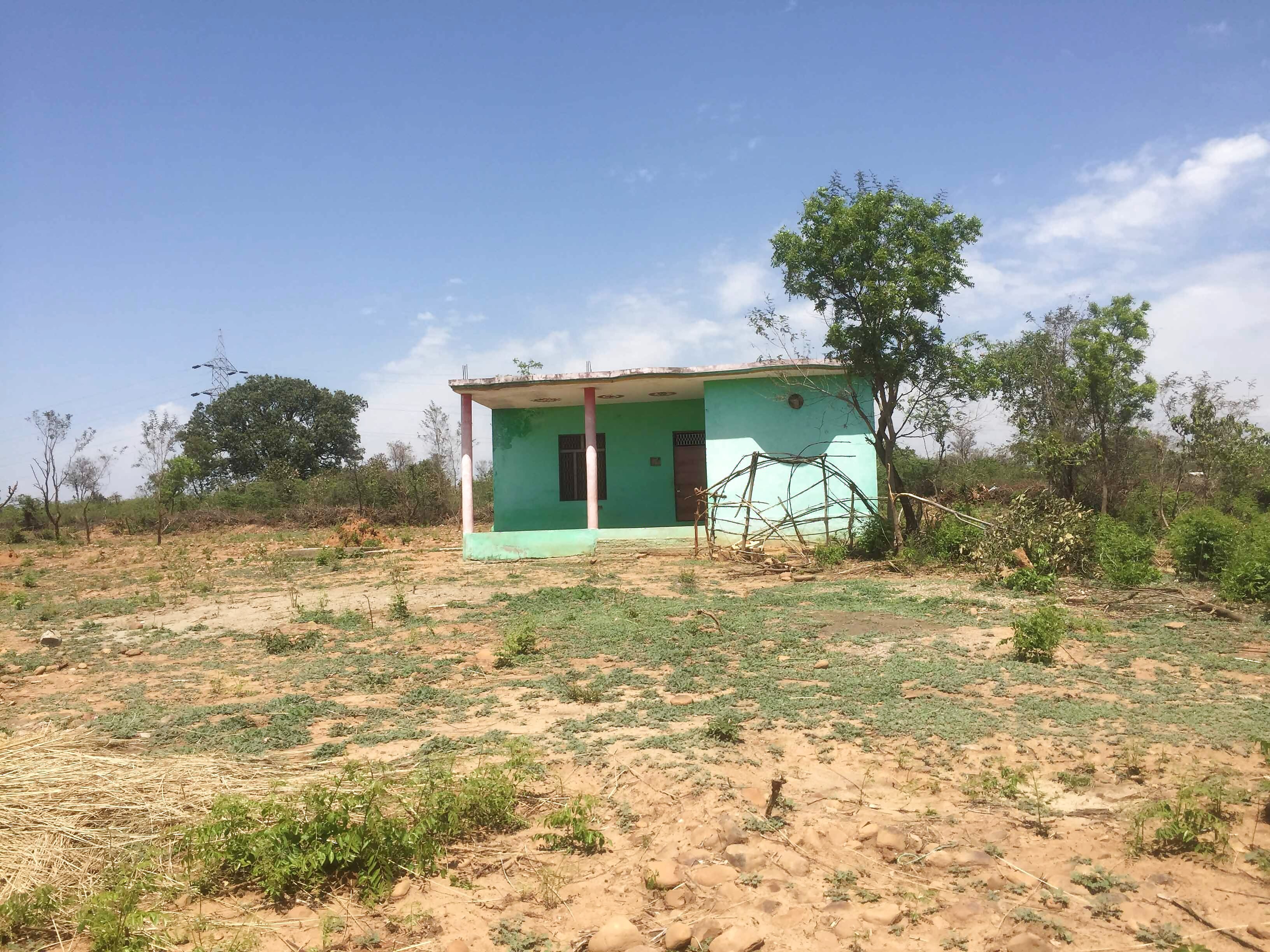
The abandoned house in Rasana village that once housed the eight-year-old and her family. (Sheikh Saaliq/News18.com)
Today, her home, a turquoise tan structure near the far end of the village, rests abandoned. The dirt road leading to the house is covered in weeds. When the news vans started to frequent the village, the family packed their belongings and left their house, walking past the same narrow lanes of the neighbourhood their girl galloped through once. The villagers, who were privy to the horror, which the girl had endured, didn’t stop them.
“The family left for the good,” says a villager.
Three months ago, they had witnessed the gory crime unfold in their village. The girl abducted, confined in a temple, drugged with high doses of sedatives, gang-raped for days, and then finally murdered, her lifeless body dumped some hundred meters away from the neighbourhood.
The hush in the village lasted only for a while as the family members of the child, who had endlessly searched for the girl, finally found her dead, right in the middle of the forest. The tension in and around the village was palpable.
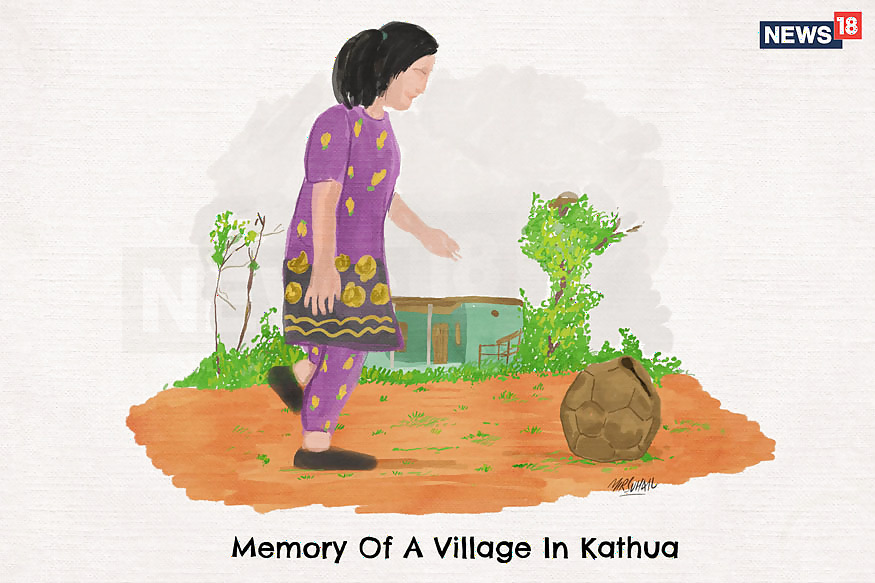
(Creative by Mir Suhail/News18.com)
A police team was dispatched to investigate. Most of them were from the nearby neighbourhood, known to the residents of Rasana. The scene was set for a possible cover-up. People whispered of the “issue being settled”.
So it was, almost.
Tripta Devi’s memory jogged when she saw Tilak Raj and recognised him immediately. She was his childhood classmate once. And now, Raj, a police officer, was investigating the gang-rape and murder of a minor in which her son Shubam Sangra and brother Sanjhi Ram later turned out to be the ‘prime accused’.
That’s when the cover-up started. Devi, as Sanjhi Ram told her, handed over Rs 1.5 lakh to Tilak Raj. Subsequent payments were allegedly made in the following days to Jha so that Ram and Sangra aren’t troubled.
According to the chargesheet filed by a special team of the Crime Branch, Sangra allegedly first raped the child and then murdered her. All this was allegedly done under the patronage of Sanjhi Ram. But before that, another policeman investigating the crime allegedly had a part to play. Deepak Khajuria, a Special Police Officer, is alleged to have already conspired in the gruesome rape and murder of the child. He was allegedly the one who had first lured Sangra to kidnap the girl and later raped her moments before helping Sangra kill her.
Now he was investigating the case he himself was allegedly part of.
However, the cover-up was blown when on January 23, six days after the girl’s dead body was found, the case was shifted to Crime Branch.
Police Officers Tilak Raj and Anand Dutta were picked up by Crime branch sleuths after it was found that they had allegedly washed the blood and mud-stained clothes of the eight-year-old victim before sending them for forensic tests.
SPO Deepak Khajuria alias Deepu, 28, was arrested after Special Investigation Team (SIT) of the Crime Branch found evidence of his alleged involvement in the case. Other accused were subsequently arrested.
Sanjhi Ram, who was absconding after his name figured during the investigation, surrendered. His son was arrested from outside the state.
When the chargesheet was filed and the gruesome details of the horror that had unfolded with the child came to light, the uproar surrounding the case soon split the village into two furious camps. One that firmly believed there's a conspiracy to “unfairly tarnish the village’s reputation by outsiders”. The other were the Gujjars and Bakarwals, the community to which the girl belonged, who believed the rape and murder was done because “the victim was from a minority community”. The chargesheet filed by the Crime Branch, however, confirmed the latter. The girl was indeed raped and murdered because the prime accused, Sanjhi Ram, wanted to oust Gujjars from the area and hence facilitated the crime.
Yet, the locals allege that the accused, who are from their village, are falsely charged. This disbelief among the locals is striking and bizarre at the same time.
Beeshendra Sharma, the grandfather of another accused, Vishal Jangotra, who also allegedly raped the girl, doesn’t even believe the girl was raped. When this reporter met him three days ago, he couldn’t seem to wrap his head around the fact that the girl could have been gang-raped. He would rather come up with extraordinary conspiracy theories on how it could be a plan by “Kashmiri Muslims to spread hatred” against their community.
On April 14, as he sat down next to the Devisthan, the temple where the girl was confined for days, Sharma talked about his views on the issue. “How can so many people gang rape an eight-year-old?” he questioned.
This strange and convoluted conspiracy theory didn’t stop at that. What followed after was a complete denial of the rape. “There was no rape. Show me the forensic report which mentions that the rape took place,” Sharma said, confidently. His claims, however, hold no ground as the chargesheet has already established that the girl was raped, not once but many times over.
“DNA profiling also established presence of victim’s blood on the vaginal smears. During investigation the opinion on various exhibits referred to FSL has been obtained. Besides, post-mortem report of the dead body was also obtained. On the strength of opinion furnished by the experts, it has been confirmed that hymen of the deceased was not found intact and lacerations on vulva of the vagina were also observed, besides blood stained discharge was found inside vagina of the deceased [sic],” the charge sheet read.
As Sharma went on about his version of what could have transpired with the girl, which also included “a possible rape by people from her own community”, he got up and opened the door of the Devisthan.
The temple is a single concrete room. In the sanctum were kept Kula Devatas like Raja Mandleek, Baba Surgal and Baba Kaliveer who are of prime importance to Jammu’s large Dogra community. Behind the sanctum were some community utensils. The other two corners, in front of the sanctum, housed few tables. And right in middle, a plastic mat.
“How can someone be kept hostage here for days? Four keys, which are kept interchangeably by the households of the village, are used to open the locks on the three doors of the Devisthan. People come and go here day in day out. There are three windows. Anyone can see inside. It is just not possible to keep someone here and then rape her,” Sharma said.
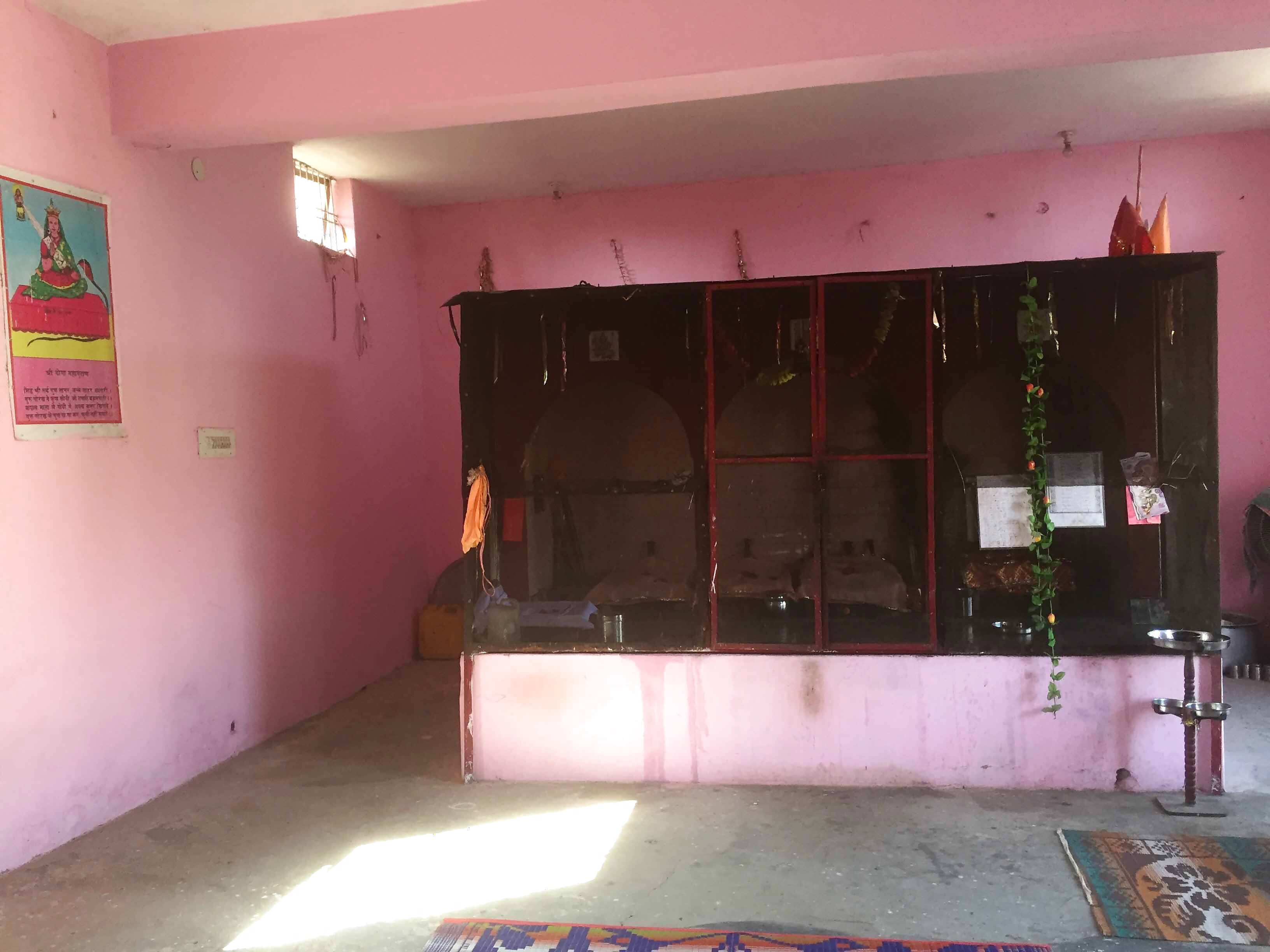
The temple in which the child was confined. (Sheikh Saaliq/News18.com)
The convoluted theories as this have boiled down to an obsession among the locals of Rasana and other neighbouring villages who have been on a hunger strike for last few days, their theories culminating into strange explanations.
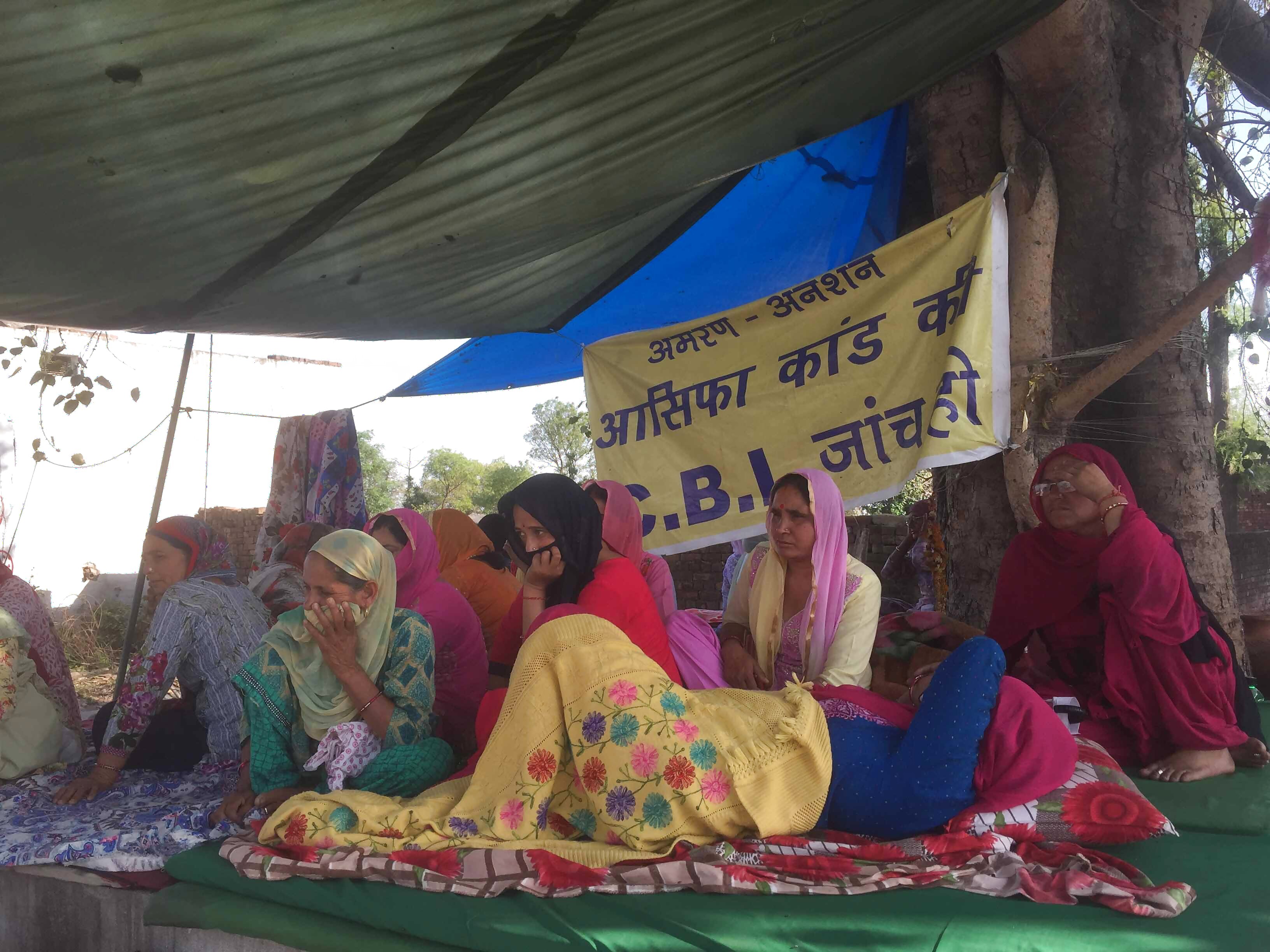
Villagers on a hunger strike demand a CBI probe into the Kathua rape and murder. (Sheikh Saaliq/News18.com)
Huddled together under a tree on the Hiranagar-Jammu highway, Sanjhi Ram's family members have been demanding an "impartial investigation by a credible agency".
“We don’t accept the probe by Crime Branch which is being done by Muslims from Kashmir,” said the people on hunger strike in unison. They questioned the Crime Branch's investigation asking ‘how could a father call his son for raping a minor girl’ as claimed in the charge-sheet.
“It is shameful that someone says an old man asked his son and nephew to rape a little girl. Who does that?" one of the Sanjhi Ram’s daughters said.
This disbelief over the accused’s involvement in the crime also reflected in the almost identical answers by different people of this closely-knit village. Most people alleged to be involved in the crime are close relatives of the locals who are participating in the hunger strike. Yet, there are some from the village, who, in a hushed tone, said that they felt the crime could have been possibly carried out by the accused.
Among them is the close friend of the 15-year-old juvenile accused in the brutal gang rape and murder, who lives in another village.
“He was into substance abuse,” the friend said.
He went on to say that some months ago, the juvenile was thrown out of school after an altercation with another student over a girl. “I don’t know if he raped that girl or not, but he always used to say how much he hates the Gujjars and that they should be ‘taught a lesson’,” his friend said, requesting anonymity.
Everyone in the juvenile’s friend circle knew of his animosity towards the Gujjars. Last year, he had picked up a fight with a Gujjar when the latter built a mosque for his community. The boy confronted the Gujjar over the use of a loudspeaker, but the Gujjars allegedly beat him up. “It was since then that he started saying that ‘things need to done else these Gujjars will spread to the whole of Kathua’,” his friend said.
It was after the fight that the boy’s mother requested her brother Sanjhi Ram to take him away to his house in Rasana.
His mother said that his “son is a kid” and would “never do such a thing”. “He is just 15 years old. He thinks like a kid, behaves like a kid. Are you telling me a kid can rape a girl?” his mother questioned.
Yet, the family’s claim that he is 15 years old is contentious. The DNA report is said to have shown his age as 19 years.
The denial didn’t stop here.
According to the charge sheet, Vishal Jangotra, the son of the main accused Sanjhi Ram, also allegedly raped the girl and helped in getting rid of her dead body. Vishal, a first-year B.Sc. student in Meerut, is alleged to have been called by the juvenile accused to rape the victim and “satisfy his lust”. His family, however, claimed that he was in college those days appearing for his examinations.
“His travel tickets to Meerut, his exam attendance, and his answer sheets are all available for anyone to see. How could he partake in this crime when he was thousand kilometres away that day?” his mother Darshana Devi said.
However, Vishal and three of his friends never appeared for the exam conducted at an exam centre in Muzaffarnagar, Uttar Pradesh. The CCTV footage gathered by the Crime Branch from the centre shows the four were absent when the exams were held; instead proxy candidates appeared for the exams.
When the same was told to the family members, they said, “It is a manufactured CCTV video. Mehbooba Mufti will do anything to make sure these Hindu boys are known as rapists all their lives.”
While everyone accused in the crime have some sort of connection to the hatred for the Gujjar community, SPO Deepak Khajuria’s story could shed more light on the ‘plans that were made’ and how the villagers have tried to brush the crime under the carpet.
Khajuria owns the land next to the piece of land owned by the deceased girl’s father. Locals say the two had reportedly fought over the land some time ago and Khajuria had vowed to “teach the old man a lesson”.
The son of a policeman, Khajuria was known to sport a twirled moustache and rode a Royal Enfield on the roads of nearby villages, which include Rasana.
“People feared him,” a local from Dhumiyal, a nearby village, said.
One of Khajuria’s childhood friends from Hira Nagar town, some three miles away from Rasana, referred to Khajuria as “criminal minded”. “I don’t even know how he got a job in the police. He was the miscreant among our group. He had issues with Gujjars, too,” Khajuria’s friend said.
According to the charge sheet, Khajuria’s role in the crime is most barbaric as he raped the girl right before her death and the juvenile took turns raping the girl before killing her. It was Khajuria who had allegedly come up with the plan to administer her sedatives to keep her in a drugged state, making the girl’s life hanging by a thread. Khajuria was engaged to a girl on December last year. They were due to marry on April 26, but with Khajuria in jail, the wedding is in doubt. His to-be fiancé said, “I don’t know the reality. The truth will come out only if the CBI probes the case. I don’t think he could do it,” she said. The 26-year-old, however, said she wanted to see Khajuria so that she could ask him if he did it. “They (Khajuria’s family) never let me meet him. I don’t understand why?” she said.
Her desire to meet Khajuria is a non-issue for the accused’s family.
“No, she can’t visit the jail. She doesn’t need to,” Khajuria’s mother said.
Yet, at the nucleus of his horrific crime, is a man who is feared in Rasana. A retired revenue official, Sanjhi Ram is also the caretaker of a ‘Devisthan’. It is in public that he always had a tiff with the Bakarwal community and did everything to ‘dislodge’ the community. “He had even warned other villagers of not providing any land to the Gujjar and Bakarwals to graze their animals,” a local from a nearby village, Kutah, said. “He was actively campaigning against their (Gujjars and Bakarwals) settlement in the region,” he said.
But Sanjhi Ram’s family, like the families of the other accused, think otherwise.
“The truth is different. It was the Gujjars who used to pick up a fight with mama ji (uncle Sanjhi Ram),” a family member said.
The people on the receiving end, the Gujjars and Bakrwals, however, remember Sanjhi Ram as a ‘goonda’.
Talib Hussain, a social activist from the Gujjar and Bakarwal community, was at the forefront of bringing the case in public. He said, “Sanji Ram’s name invoked fear among the Muslims. He was known to misbehave with Bakarwal women too” Hussain said.
Almost seven people from three different villages — Dhumiyal, Kutah and Maila — this reporter met, agreed with Hussain.
A Bakarwal woman from Dhumiyal said that in the past, too, Sanjhi Ram and his behaviour with women folk of Gujjar and Bakaral community was out in public. “He (Sanjhi Ram) used to ogle at us, call us names and sometimes even abuse us for no reason at all,” the woman said.
But what substantially links Sanjhi Ram to the crime is the “money trail” that was allegedly used to bribe policemen, to which most of the villagers turn a blind eye.
After the outcry over the rape and murder of the girl started to surface, Sanjhi Ram allegedly tried to hush up the case by paying Rs 6 lakh of the Rd 5-6 lakh deal with the Sub-Inspector at police station Hiranagar, Anand Dutta.
According to a source, Sanjhi Ram had already withdrawn Rs 10 lakh in a phased manner when the investigation into the crime was on. The remaining Rs 6 lakh were stashed somewhere else after he went into hiding.
“He had planned to bribe the policemen in a phased manner and had kept the remaining money in case he had to bribe more people,” a police official, who was part of the investigation team, said. As the demand for harsh punishment to the accused is gaining momentum, the locals of Rasana and other neighbouring villages still maintain that they know nothing about the crime that shocked the country.
“We didn’t witness anything. Nothing happened in this village,” a local said.
While the collective memory of the village — almost in some strange unison — seems to have turned a blind eye to the brutal rape and murder of the eight-year-old, the fact still remains what is known in the public: She was eight-years-old, that girl dressed in floral frocks, who was drugged, gang raped and murdered only because some men wanted to send a message to the people of a certain community.











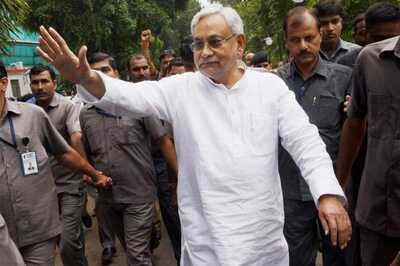
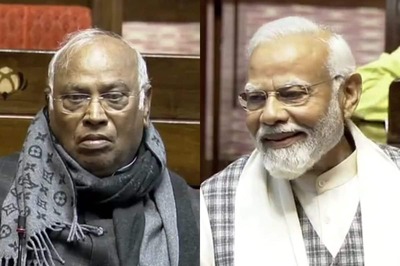

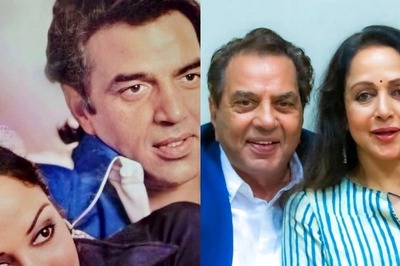
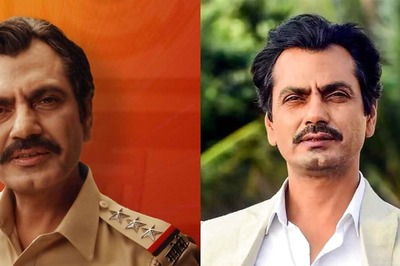
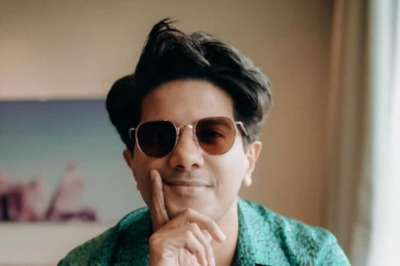
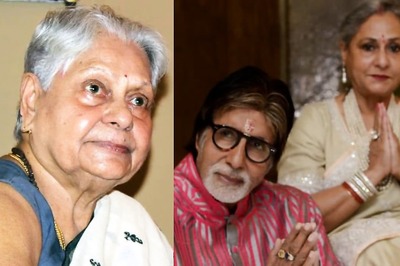
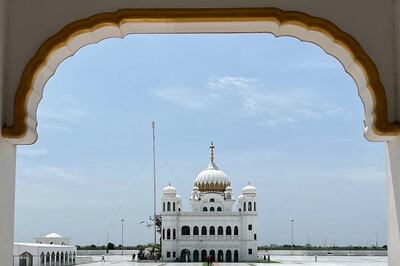
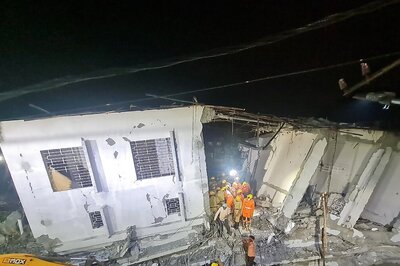
Comments
0 comment